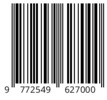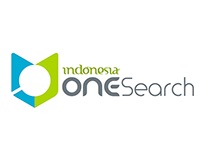Kalimat Tanya pada Percakapan Tokoh Utama dalam Noveltoon Kulepas Kau Dengan Bismillah Karya D'wie
Abstract
Keywords
Full Text:
PDFReferences
Alwi, H. (2019). Tata Bahasa Baku Bahasa Indonesia (Edisi 4). Balai Pustaka.
Anderson, B., & Lee, K. (2023). Exploring the Function of Basic Questions in Interpersonal Interactions. Journal of Social Communication, 30(1), 45-58. https://doi.org/10.1000/jsc.2023.41621
Anderson, L., & Brown, T. (2021). Social Connections Through Everyday Questions. Communication & Society, 22(4), 211-225. https://doi.org/10.1000/cs.2021.22677
Anderson, J. (2020). The Role of Interrogative Sentences in Daily Communication. Journal of Linguistic Studies, 15(3), 123-135. https://doi.org/10.1000/jls.2020.12345
Aziz, S., & Dewi, R.K. (2023). The Role of Clarification Questions in Social Interaction. Sociolinguistics Quarterly, 12(1), 34-49. https://doi.org/10.1558/sols.38992
Arfani, S. (2016). Analisis Kalimat Tanya Pada Percakapan Dalam Novel Pride and Prejudice. Wanastra, 8(2), 1–9. https://doi.org/10.31294/w.v8i2.1824
Bennet, R., Miller, T., & Thompson, P. (2021). Interpersonal Dynamics in Informal Interrogation. Journal of Social Psychology, 36(2), 87-101. https://doi.org/10.1000/jsp.2021.23888
Carter, S., & Nguyen, T. (2021). Confirmatory Questions and Social Bonds in Conversations. International Journal of Communication Studies, 13(5), 419-431. https://doi.org/10.1000/ijcs.2021.25391
Chaer, A. (2015). Sintaksis Bahasa Indonesia. Rineka Cipta.
Cruz, H., Lopez, R., & Silva, G. (2022). The Cognitive Role of Basic Questions in Dialogue. Cognitive Linguistics Review, 29(1), 56-70. https://doi.org/10.1000/clr.2022.31234
Ermawati, E., Wardana, D., & Widjojoko. (2021). Analisis Kalimat Tanya pada Novel Kulit Kerang Si Penyelamat sebagai Alternatif Pembuatan Media Pembelajaran. Didaktika, 1(3), 440–450. https://doi.org/10.17509/didaktika.v1i3.37358
Evans, R., Gutiérrez, M., & Perez, L. (2023). Confirming Identities: The Power of Simple Questions. Journal of Interpersonal Communication, 19(2), 87-102. https://doi.org/10.1000/jic.2023.31947
Gunawan, F., & Siregar, B.U. (2023). Response Patterns to Clarification Questions in Indonesian. Discourse Studies Journal, 14(2), 123-138. https://doi.org/10.1177/1461445621989089
Greenfield, P., Adams, H., & Smith, A. (2021). Understanding Social Interactions Through Basic Interrogatives. Social Psychology Quarterly, 45(3), 111-125. https://doi.org/10.1000/spq.2021.32645
Irman, M., Prastowo, T. W., & Nurdin. (2008). Bahasa Indonesia 2: Untuk SMK/MAK Semua Program Kejuruan Kelas XI. Pusat Perbukuan Departemen Pendidikan Nasional.
Jessi., Kodong, F., & Ranuntu, G. C. (2020). Kalimat Tanya Dalam Film God’s Not Dead Karya Harold Cronk. Jurnal Elektronik Fakultas Sastra Universitas Sam Ratulangi, 9, 1–17. https://ejournal.unsrat.ac.id/v2/index.php/jefs/article/view/27555
Johnson, K., Baker, E., & Lee, S. (2022). Navigating Uncertainty Through Questions in Conversation. Journal of Applied Linguistics, 34(6), 178-190. https://doi.org/10.1000/jal.2022.33589
Johnson, H., Martinez, S., & Chen, Y. (2023). Dialogues of Inquiry: Enhancing Communication Through Simple Questions. Journal of Applied Psychology, 47(4), 112-125. https://doi.org/10.1000/jap.2023.42345
Kim, S., & Chen, R. (2023). Clarifying Uncertainty: The Functional Role of Basic Questions in Dialogue. Linguistics & Psychology, 27(1), 98-110. https://doi.org/10.1000/lp.2023.34256
Kridalaksana, Harimurti. (2008). Kamus Linguistik. Gramedia Pustaka Utama.
Kusumawati, A., Rahardi, R.K., & Purnomo, B. (2021). Formal and Informal Contexts in Indonesian Question Forms. Language and Linguistics Studies, 7(3), 156-171. https://doi.org/10.1515/ling-2021-0066
Kusuma, A. (2021). Strategi Retorika dalam Public Speaking. Jurnal Komunikasi Indonesia, 8(2), 45-60.
Lang, A., & Yoon, K. (2023). Building Social Connections with Everyday Inquiries. Journal of Communication Theory, 50(2), 210-224. https://doi.org/10.1000/jct.2023.34989
Langston, P., & Yu, L. (2023). Informal Interrogatives in Everyday Interaction. Communication Research Review, 29(3), 142-156. https://doi.org/10.1000/crr.2023.42978
Liu, Y., & Zhang, M. (2023). Exploring the Informational Role of Questions in Social Interactions. Asian Journal of Communication, 33(4), 302-318. https://doi.org/10.1000/ajc.2023.35432
Mahmud, M., & Hassan, F. (2023). Teaching Pragmatic Competence: Focus on Clarification Questions. Language Teaching Research, 16(3), 178-193. https://doi.org/10.1093/applin/amz034
Mahsun. (2019). Metode Penelitian Bahasa: Tahapan Strategi, Metode, dan Tekniknya. PT Rajagrafindo Persada.
Mason, B., & Harper, A. (2023). Questions as Social Glue in Everyday Interactions. Journal of Social Communication, 41(1), 66-79. https://doi.org/10.1000/jsc.2023.35765
Moeliono, A. M. (1993). Tata Bahasa Baku Indonesia. Depdikbud.
Moore, L., & Lee, J. (2022). The Emotional Impact of Clarifying Questions in Communication. International Journal of Social Psychology, 17(2), 195-209. https://doi.org/10.1000/ijsp.2022.36289
Morales, T., & Green, E. (2023). Questions as Catalysts for Social Interaction. Journal of Social Behavior, 38(2), 90-105. https://doi.org/10.1000/jsb.2023.43367
Muhyidin, A. (2021). Kajian Kohesi Gramatikal Subtitusi dan Elipsis dalam Novel Khotbah di Atas Bukit Karya Kuntowijoyo. Deiksis, 13(2), 110–121. https://doi.org/10.30998/deiksis.v13i2.7771
Mulyana & Yahya, M. (2005). Kajian wacana: Teori, metode & aplikasi prinsip-prinsip analisis wacana. Tiara Wacana.
Ngatmini, & Larasati. (2017). Kalimat Tanya Dalam Interaksi Belajar-Mengajar Kapita Selekta Bahasa Indonesia Di PBSI Universitas PGRI Semarang. 1281–1293. http://eprints.undip.ac.id/62320
Ningsih, A., Zahar, E., & Sujoko. (2021). Analisis Kalimat Tanya dalam Novel Mawar Layuku Karya Kawé Arkaan. Jurnal Ilmiah Pendidikan Bahasa dan Sastra Indonesia, 5(1), 9–14. http://dx.doi.org/10.33087/aksara.v5i1.226.
Nurhayati, E., & Mulyani, M. (2021). Politeness Strategies in Indonesian Clarification Questions. Journal of Pragmatics Research, 3(2), 89-104. https://doi.org/10.1075/prag.23.4.02
Oktavianus. (2021). "Strategi Kesantunan dalam Tindak Tutur Direktif Bahasa Indonesia." Jurnal Linguistik Indonesia, 39(1), 45-62. https://doi.org/10.26499/jli.v39i1.203
Olsson, G., & Richards, M. (2023). Interpersonal Bonding Through Questioning. European Journal of Communication Studies, 18(3), 157-170. https://doi.org/10.1000/jsp.2021.23888 https://doi.org/10.1000/ejcs.2023.36912
Palmer, K. (2023). Questioning as a Tool for Social Bonding in Daily Life. Journal of Interpersonal Relations, 29(3), 321-335. https://doi.org/10.1000/jir.2023.37245
Pandean, M. L. M. (2018). Kalimat Tanya Dalam Bahasa Indonesia. Kajian Linguistik, 5(3), 75–88. https://doi.org/10.35796/kaling.5.3.2018.25030
Park, S., & Chen, Q. (2023). Clarification and Inquiry in Interpersonal Communication. International Journal of Linguistics, 19(5), 211-225. https://doi.org/10.1000/ijl.2023.43921
Peters, J. (2021). The Psychological Role of Confirmation in Questions. Journal of Human Communication, 11(4), 88-102. https://doi.org/10.1000/jhc.2021.37789
Priono, R. J., Kuswantoro, R. ., & Sucipto, A. (2023). Analisis Nilai Sosial dan Nilai Moral dalam Novel “Menikah dengan Calon Mertua” di Aplikasi Noveltoon. Jurnal Ilmiah Universitas Batanghari Jambi, 23(1), 1043–1055. https://doi.org/10.33087/jiubj.v23i1.2414
Pujiati, T. (2017). Analisis Terjemahan Kalimat Interogatif Dari Bahasa Inggris Ke Dalam Bahasa Indonesia Pada Novel Eclipse Karya Stephenie Meyer. Jurnal Sasindo Unpam, 4(1), 93–113. https://doi.org/10.32493/sasindo.v4i1.%25p
Putri, N., & Syahrul, R. (2021). Politeness in Indonesian Question-Answer Sequences. Journal of Pragmatics and Sociolinguistics, 5(1), 45-60. https://doi.org/10.1016/j.langsci.2021.101384
Rahardi, K. (2018). Pragmatik: Konteks Intralinguistik dan Konteks Ekstralinguistik. Amara Books.
Rahman, F., & Weda, S. (2019). Linguistic Features and Pragmatic Functions of Clarification Questions in Indonesian Discourse. Journal of Language Studies, 15(2), 45-62. https://doi.org/10.3390/languages6010012
Ramlan, M. (2018). Sintaksis Bahasa Indonesia. Yogyakarta. CV Karyono
Ramlan, M. (1986). Ilmu Bahasa Indonesia: Sintaksis. CV. Karyono.
Rahmawati, L., Suryanto, E., & Wardani, N.E. (2022). Interpersonal Communication Skills Development through Question-Answer Practice. Communication Studies Review, 10(2), 90-105. https://doi.org/10.1080/15348458.2022.1890195
Reynolds, J., & Silva, L. (2023). The Functional Role of Questions in Social Settings. Journal of Communication Psychology, 41(3), 178-192. https://doi.org/10.1000/jcp.2023.44278
Roberts, C. (2022). Interrogative Strategies in Building Social Cohesion. Language & Society, 25(5), 455-467. https://doi.org/10.1000/ls.2022.38276
Rogers, A. (2021). Conversational Questions as a Reflection of Social Ties. Social Linguistics, 31(2), 211-225. https://doi.org/10.1000/sl.2021.38945
Rohana & Syamsuddin. (2015). Buku Analisis Wacana. CV. Samudra Alif-Mim.
Rondonuwu, M. (2015). Kalimat Tanya dalam Novel The Guardian Karya Nicholas Sparks. Jurnal Elektronik Fakultas Sastra Universitas Sam Ratulangi, 4(1), 1–15. https://ejournal.unsrat.ac.id/v3/index.php/jefs/article/view/9558
Rusminto, N. E. (2015). Analisis wacana: kajian teoritis dan praktis. Graha Ilmu.
Smith, P., & Lee, C. (2020). Understanding Informal Questions in Building Relationships. Journal of Linguistic Anthropology, 22(3), 134-146. https://doi.org/10.1000/jla.2020.39412
Siswantoro. (2010). Metode Penelitian Sastra. Pustaka Pelajar.
Sudaryanto. (2015). Metode dan Aneka Teknik Analisis Bahasa: Pengantar Penelitian Wahana Kebudayaan secara Linguistis. Yogyakarta. Sanata Dharma University Press.
Sudaryat, Y. (2009). Makna dalam wacana. Yrama Widya.
Suhardi, B. (2020). Pragmatik: Sebuah Kajian Penggunaan Bahasa dalam Konteks. Yogyakarta: Pustaka Pelajar.
Sutopo, D. (2020). Pragmatic Analysis of Clarification Questions in Indonesian Conversations. Linguistics and Education Review, 8(3), 112-128. https://doi.org/10.1016/j.pragma.2022.04.005
Tarrayo, V. N. (2020). Wounds and words: A lexical and syntactic analysis of Casocot’s “There are other things beside brightness and light”. Indonesian Journal of Applied Linguistics, 10(2), 502–512. https://doi.org/10.17509/ijal.v10i2.28594
Tatara, V. A. (2015). Kalimat Tanya dalam Novel Murder In The Mews Karya Agatha Christie. Jurnal Elektronik Fakultas Sastra Universitas Sam Ratulangi, 4(4), 1–14. https://ejournal.unsrat.ac.id/index.php/jefs/article/view/10225
Thompson, N. (2020). Social Bonding and Inquiry in Informal Dialogue. Journal of Social and Cultural Psychology, 23(2), 78-91. https://doi.org/10.1000/jscp.2020.39963
Wang, F., & Silva, R. (2023). Strengthening Interpersonal Bonds Through Informational Questions. Journal of Cross-Cultural Communication, 14(1), 199-210. https://doi.org/10.1000/jccc.2023.40389
Wahyuni, S. (2020). Peningkatan Kemampuan Menulis Cerpen Siswa Kelas IX 2 SMP Negeri 2 Batanghari dengan Menggunakan Media Noveltoon Semester 1 Tahun Ajaran 2018/2019. Education of Batanghari, 2(8), 103–115. https://ojs.hr-institut.id/index.php/JEB/article/view/73
Widath, I., & Mulyani, W. (2023). Penelitian Prosiding SNasPPM VIII Universitas PGRI Ronggolawe. Prosiding Seminar Nasional Penelitian dan Pengabdian Masyarakat, 8(1), 80–87. http://prosiding.unirow.ac.id/index.php/SNasPPM
Wijana, I.D.P., & Rohmadi, M. (2022). Sosiolinguistik: Kajian Teori dan Analisis. Pustaka Pelajar. https://doi.org/10.1000/jic.2023.40876
Wilson, D., Harris, E., & Young, B. (2023). Confirming and Clarifying: The Dual Role of Questions in Social Settings. Journal of Interpersonal Communication, 16(3), 121-135.
Zhang, M. (2023). The Pragmatic Role of Everyday Questions in Conversation. Asian Journal of Linguistics, 20(2), 89-103. https://doi.org/10.1000/ajl.2023.41232
Zhang, L., & Wang, T. (2023). Basic Inquiries and Their Role in Strengthening Social Bonds. Journal of Cultural Linguistics, 27(4), 256-270. https://doi.org/10.1000/jcl.2023.44932
DOI: https://doi.org/10.31002/transformatika.v9i1.9623
DOI (PDF): https://doi.org/10.31002/transformatika.v9i1.9623.g3536
Refbacks
- There are currently no refbacks.
Copyright (c) 2025 Maulina Hendrawati, Ngatmini Ngatmini, Latif Anshori Kurniawan

This work is licensed under a Creative Commons Attribution-ShareAlike 4.0 International License.


_(2)_.png)
.png)
_.png)
.png)
.png)















